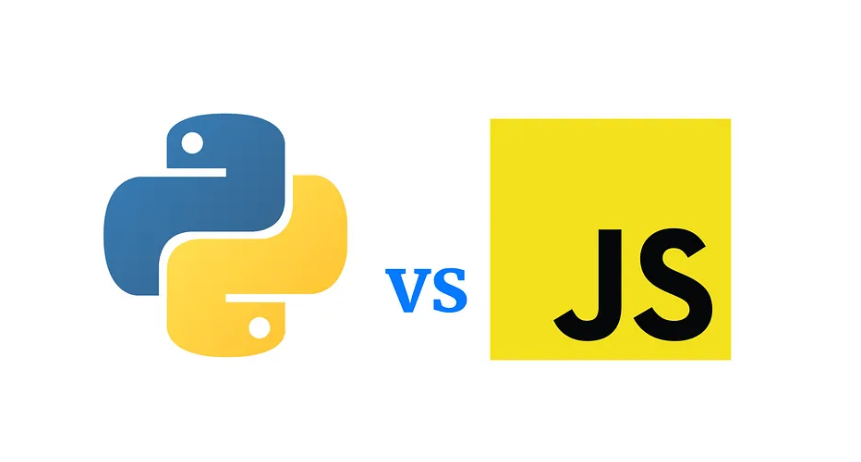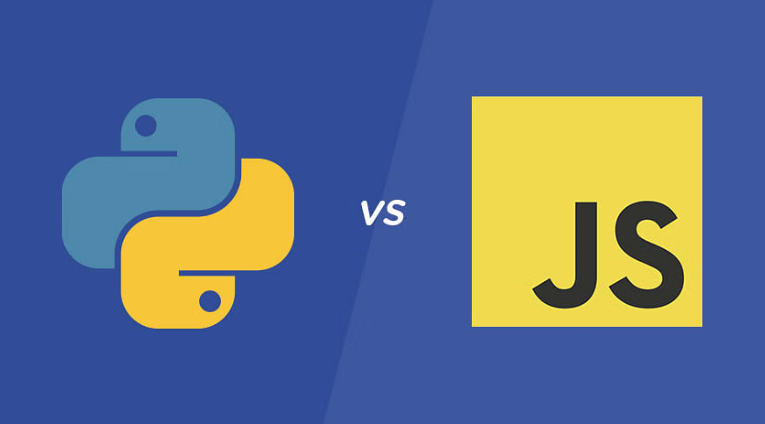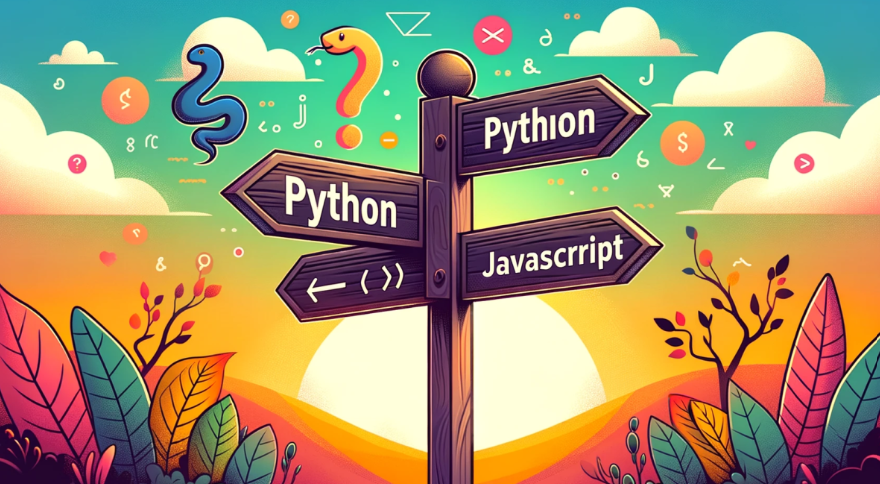In the rapidly evolving field of web development, the choice of programming language can significantly impact the success of a project. Among the many languages available, Python and JavaScript stand out as two of the most popular options.
Both languages have their strengths and are supported by vibrant communities, but which one is better suited for web development? This post aims to delve into various aspects such as popularity, ease of use, performance, and career opportunities to help you make an informed decision.
Popularity and Community Support
JavaScript has always been the favorite among web developers, a critical contender in front-end development’s pantheon of tools and languages. It has a very significant function in driving the interactive aspect of a website; therefore, it is crucial in web development. Extensive community support plays a seeming role in the constant JavaScript promotions; furthermore, these include numerous tutorials and forums encouraging users to master JavaScript and numerous libraries useful to developers in addressing numerous issues.
Python, while initially known for other domains, has seen a significant surge in popularity within web development circles. This has brought the system on board because the better the functionality of this language is, the more the end-user amplifies the developer’s community. There is always rich support from its riteful community and an abundance of libraries and frameworks to assist in constructing web applications in Python.
The two languages boast of healthy ecosystems grounded in their gains. To date, JavaScript has taken the larger share of the web development aspect due to its popularity across numerous sites and applications. However, due to the generalization of applications of the programming language, it has been adopted into other fields apart from web development, thus growing its base.
Whether you’re looking to build intricate front-end interfaces or robust back-end systems, Python and JavaScript offer the community support and resources needed to succeed.

Learning Curve and Ease of Use
Python is often praised for its straightforward and readable syntax, which resembles natural language. It is a good language for those who wish to start with programming but are interested in web development. Python is designed with the benighted philosophy that programming should be uncomplicated to originate effective programs that are easy to read and understand.
Beginners can quickly pick up the basics and build functional web applications without getting bogged down in complex syntax rules.
However, JavaScript has a steeper learning curve, mainly because of its asynchronous nature and event-driven architecture. These features can be challenging for beginners to grasp initially. However, once you understand JavaScript, you can do much with web development, especially front-end development.
A revisit to using JavaScript as a must-have application behind every Web browser. Moreover, with tools such as Node.js that allow JavaScript developers to write the application server side, the environment is unified.
However, it must be mentioned that plenty of resources are available for the JavaScript language – manuals, tutorials, and forums with experienced coders- to help newbies deal with significant obstacles they may encounter at the very beginning. After being introduced to its concepts, JavaScript was discovered to afford developers a lot of liberty and might in web-based developments.
Each language has particular benefits compared to other languages regarding learning and popularity. Python is ideal for those who do not want complications and outdated coding language and want something easy to learn and direct yet powerful. Javascript offers people a raw tool that they can use to their advantage.
Performance and Speed
Regarding performance and speed in web development, JavaScript often has the edge due to its fast execution in the browser. Innovations like the V8 engine and Just-In-Time (JIT) compilation have made JavaScript incredibly efficient. Its ability to handle asynchronous operations smoothly makes it ideal for real-time applications such as chat apps, online gaming, and live updates.
On the other hand, Python is an interpreted language, which generally means slower execution times compared to JavaScript. Nevertheless, due to several libraries and third-party modules, Python can be very efficient in web development. The above resources can help reduce performance constraints and thus make Python appropriate for most web applications.
Libraries such as Django and Flask build up Python’s capability by offering high-performance solutions for tasks typical for web development. While Python may not match JavaScript’s speed for high-performance applications, it provides sufficient efficiency for most web development needs.
Regarding server-side performance, Node.js – a JavaScript framework – is based on an event-oriented approach and can manage many connections at once, which is perfect for large-scale applications. Python, although slower, is often easier to optimize and debug, especially for applications where execution speed is not the primary concern.
Frameworks and Libraries
Frameworks and libraries significantly ease web development by providing pre-built components and tools. JavaScript comes into its own with front-end frameworks such as React, Angular, and Vue.js that help to create complex UIs. Node.js provides event-driven, scalable web applications on the server side by extending JavaScript beyond the clients. This combination makes, JavaScript one of the best languages that can be used in full-stack development.
Python’s web development advantage is boosted by these remarkable frameworks, Django and Flask. Django seems to be one of the most famous ‘batteries-included’ frameworks, which comes integrated with an ORM tool, an admin back-end, and security features, allowing for the fastest possible web application development.
Quoting, however, is more versatile and ideal for nutshell or, instead, for complex applications that can significantly be modified. Both frameworks involve large libraries that eliminate coding redundancy; any integrated complex functionality is easier to handle.
Javascript and Python have huge libraries that suit the needs of different projects. Express.js and Next.js make JavaScript powerful on the server side, while Requests, Beautiful Soup, and Pandas provide value additions for handling data and web scraping for Python. The nature and strength of frameworks and libraries in both languages guarantee the programmers all the tools required to make powerful, enriched web applications.
Versatility and Use Cases
Python and JavaScript are equal in versatility, which makes these languages suitable for so many projects. JavaScript is inherently tied to web development to create great front-end solutions; thus, it is crucial for any successful web program. Bibliographic sources also make it clear that React and Vue.js are frameworks for building complex UI and Node makes it possible to use JavaScript on the back end, which makes JavaScript a strong full-stack system.
Unlike HTML, Python ePythonmespeciain thatgitdeb development can be applied in data analysis, machine learning, and even automation. Due to the flexibility of its application, it is better preferred by developers who are involved in cross-disciplinary projects. There are reputed API and web frameworks, namely, Django and Flask, which help Python to be implemented as a back-end language for different types of web applications.
JavaScript’s ability to handle both front-end and back-end development ensures a unified approach to web application creation. Meanwhile, Python’s versatility allows it to be integrated into numerous workflows and applications beyond the traditional scope of web development. This makes Python a desirable option for developers who like to work with a language that can be used for anything from building Web applications and data analysis to automation.
Integration and Compatibility
Customizations are required when designing web applications that interface with other computer systems. Web development is primarily covered by JavaScript, which is considered the standard language in the industry. It is well-compatible with HTML & CSS, which makes it easier to develop a comprehensive and clickable user interface.
Also, the number of APIs and available libraries is vast, through which JavaScript can work with many third-party services Therefore, this scripting language can be called universal to create complex web applications with tight integration.
Python also performs very well in terms of incorporating options. Python is very adaptable to different types of database connectivity along with APIs, even other languages that are interlinked with the same. Since it can easily be read and understood, it is the go-to tool for creating complex systems that make scalable and maintainable web applications.
It should be noted that due to Python’s flexibility, using it in projects that in any way demand serious data processing or machine learning capabilities, inclusion is an option.
JavaScript’s Node.js further amplifies its compatibility by enabling server-side development, creating a unified environment for client and server-side scripting. This makes it easier to bring different technologies to market, reducing the difficulty of managing several technologies.
However, Django and Flask, two Python-based frameworks, come equipped with tools that make integrating the data structures with applications easier. These frameworks have features that accommodate various web technologies, enabling application developers to create applications that need combined incorporations.
Job Market and Career Opportunities
There is sufficient career opportunity for web developers in both Python and JavaScript, as the market for web developers is not in danger of diminishing shortly. JavaScript’s implementation in almost all web applications will create constant demand for front-end and full-stack developers. Fluency in frameworks such as React, Angular, or Vue is a bonus; on the server side, Node.js will be an ideal tool.
However, in recent years, Python has also been used for web development due to the requirements of data-oriented applications and artificial intelligence systems. Developers experienced with Django and Flask are highly sought after for their ability to quickly create secure, scalable web applications. Also, the good practice of using Python in a vast array of professions and fields in different industries highly contributes to the advancement of one’s career.
Both these languages can present great opportunities; however, the choice can depend more on one’s career interests. If you lean towards developing fun and engaging front-end interfaces or developing complex back-end solutions, then there is a lot of opportunity with JavaScript.
On the other hand, whereas front-end has more artistic appeal and means that you’ll be designing interfaces and layouts, back-end development with a view to data science or an automation-related position is well served by the Python offers. In any case, knowledge of either of these languages will allow you to find a job in a vast number of occupations associated with a constantly expanding sphere of web development.



